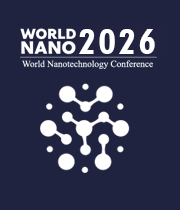Light Emitting Materials
Light Emitting Materials (LEMs) play a pivotal role in the development of various technological applications, ranging from displays and lighting to optoelectronic devices. These materials possess the unique ability to emit light when subjected to an external stimulus, such as an electric current or photon absorption. One of the most widely utilized categories of LEMs is organic light-emitting materials (OLEDs), which are renowned for their flexibility, efficiency, and vibrant color reproduction. OLEDs are commonly found in modern displays, including smartphones and televisions, where their ability to produce high-quality, energy-efficient light has revolutionized visual experiences.
In addition to OLEDs, inorganic light-emitting materials, such as phosphors, have garnered significant attention for their applications in lighting and display technologies. Phosphors are often employed in fluorescent lamps, LED lighting, and cathode ray tube (CRT) displays. These materials emit light when excited by ultraviolet or visible radiation, producing a broad spectrum of colors. The versatility of phosphors has contributed to advancements in energy-efficient lighting solutions, enabling the development of environmentally friendly alternatives to traditional incandescent bulbs.
Continued research in the field of light-emitting materials aims to enhance efficiency, durability, and cost-effectiveness. The pursuit of novel materials, such as perovskites and quantum dots, holds promise for the next generation of displays and lighting technologies. As the demand for energy-efficient and high-performance lighting solutions grows, the evolution of light-emitting materials remains at the forefront of scientific and technological innovation, shaping the landscape of modern illumination and visual displays.

Harry Ruda
University of Toronto, Canada
Raman Singh
Monash University, Australia
Paulo Cesar De Morais
Catholic University of Brasilia, Brazil
Xiao Hong Nancy Xu
Old Dominion University, United States
S V A R Sastry
Harcourt Butler Technical University, India
Vinayak Adimule
Angadi Institute of Technology and Management, India



Title : 40,000 implants in humans and no failure: The impact of nanomedicine
Thomas J Webster, Hebei University of Technology, China
Title : Cellulose-derived biochar modified with iron oxide and ZnO nanoparticles by a novel one-step pyrolytic method for removal of emerging contaminants from water
Rashad Al Gaashani, Hamad Bin Khalifa University, Qatar
Title : Harnessing the unique properties of engineered nanostructures for sensing
Harry Ruda, University of Toronto, Canada
Title : Circumventing challenges in developing CVD graphene on steels for extraordinary and durable corrosion resistance
Raman Singh, Monash University, Australia
Title : Nano DAP augments productivity, phosphorus use efficiency, and profitability of spring wheat in India
Binaya Kumar Parida, Coromandel International Ltd, India
Title : Lipid nanoparticles formulations: From bench scale to industrial scale
Mohammad A Obeid, RAK Medical and Health Sciences University, United Arab Emirates